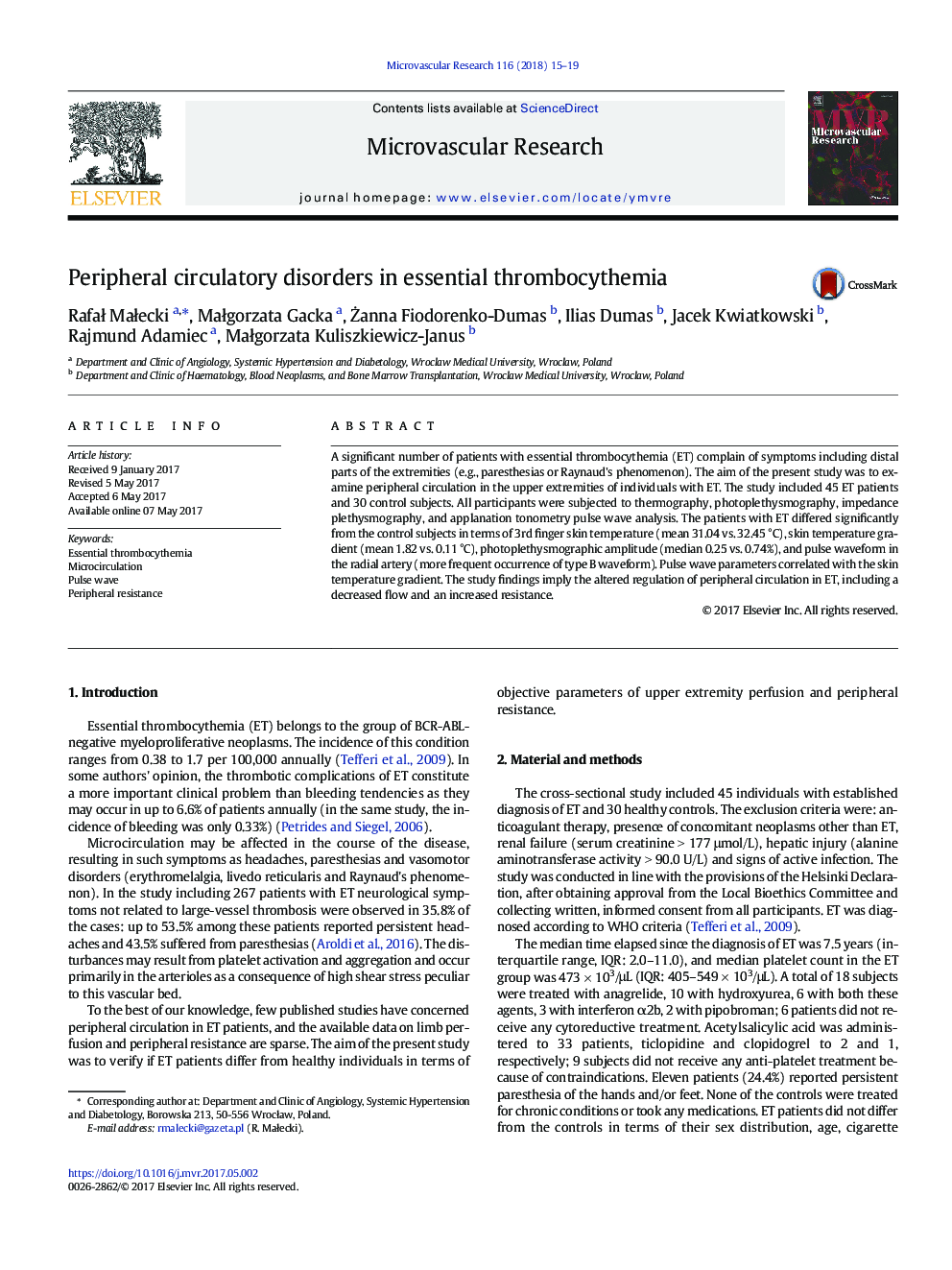| Article ID | Journal | Published Year | Pages | File Type |
|---|---|---|---|---|
| 5513695 | Microvascular Research | 2018 | 5 Pages |
â¢Many patients with essential thrombocythemia (ET) complain of symptoms related to the microcirculation (e.g., paresthesias).â¢In 45 ET patients and 30 controls parameters of perfusion and peripheral resistance were determined using several methods.â¢In ET lower digital temperature and higher temperature gradient between the metacarpus and 3rd finger were observed.â¢The findings were consistent with lower amplitude of the oscillographic curve and results of pulse wave analysis.â¢Including data on forearm perfusion, the results suggest decreased peripheral flow and increased peripheral resistance in ET.
A significant number of patients with essential thrombocythemia (ET) complain of symptoms including distal parts of the extremities (e.g., paresthesias or Raynaud's phenomenon). The aim of the present study was to examine peripheral circulation in the upper extremities of individuals with ET. The study included 45 ET patients and 30 control subjects. All participants were subjected to thermography, photoplethysmography, impedance plethysmography, and applanation tonometry pulse wave analysis. The patients with ET differed significantly from the control subjects in terms of 3rd finger skin temperature (mean 31.04 vs. 32.45 °C), skin temperature gradient (mean 1.82 vs. 0.11 °C), photoplethysmographic amplitude (median 0.25 vs. 0.74%), and pulse waveform in the radial artery (more frequent occurrence of type B waveform). Pulse wave parameters correlated with the skin temperature gradient. The study findings imply the altered regulation of peripheral circulation in ET, including a decreased flow and an increased resistance.
